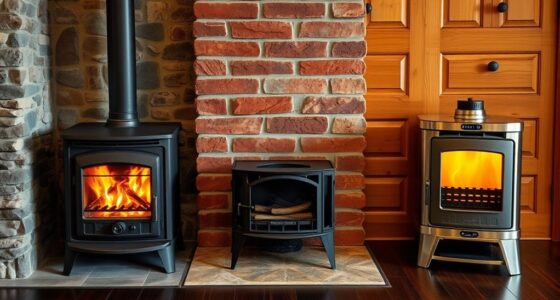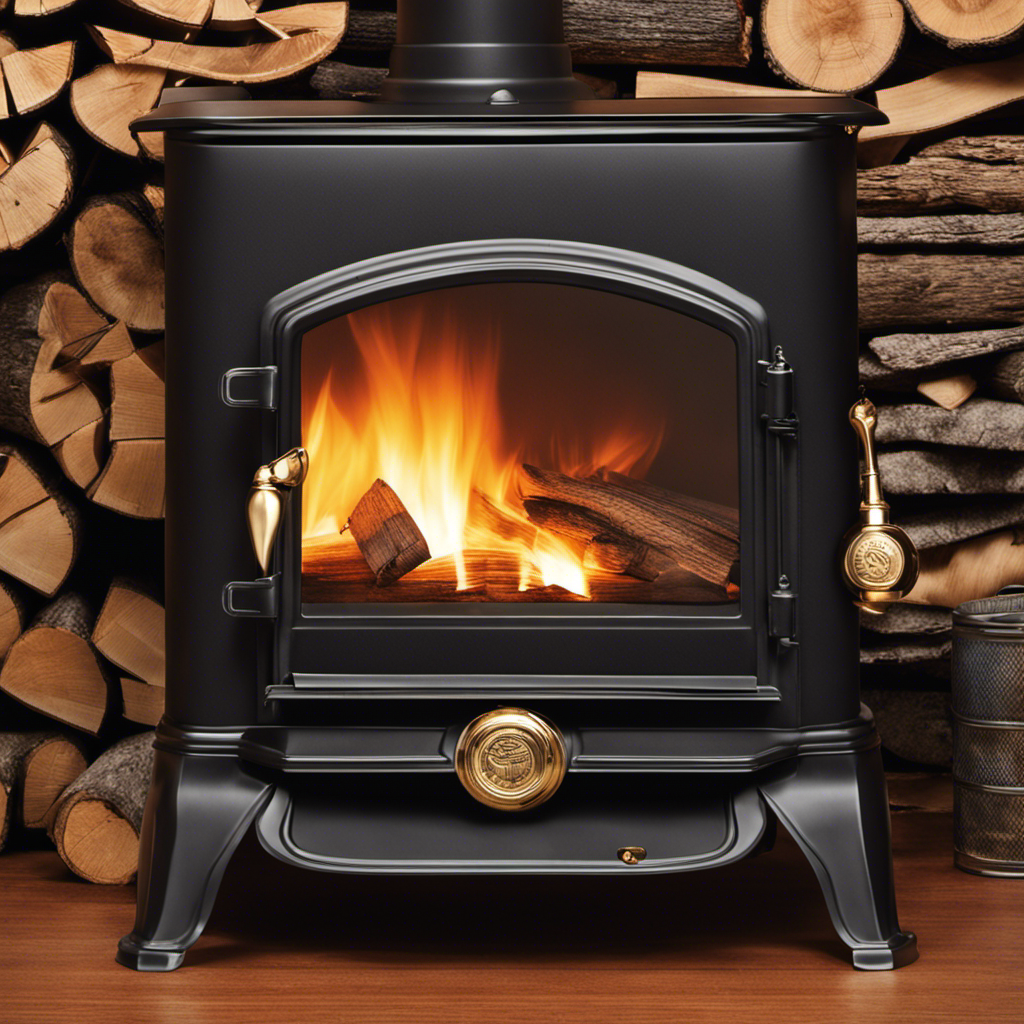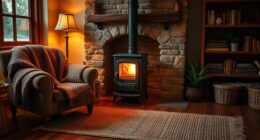Sitting beside the flickering flames, it dawns on me that my wood stove isn’t as efficient in heating as it should be. This realization prompts me to consider adjusting the flue settings to maximize the heat output.
In this article, I will guide you through the intricacies of understanding proper airflow, adjusting the damper, and managing draft control.
With these tips, you’ll be able to maintain efficient flue settings, ensuring a cozy and warm atmosphere all winter long.
Get ready to harness the full potential of your wood stove!
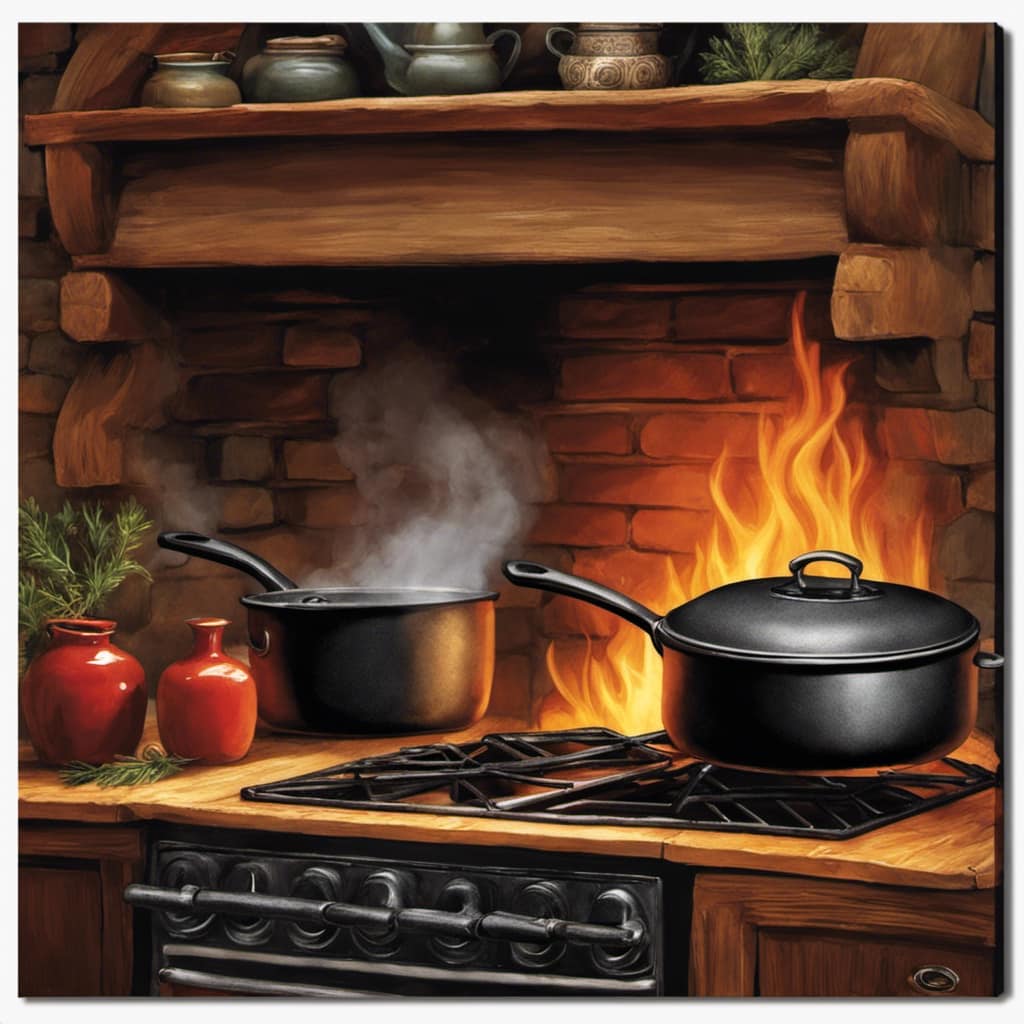
Key Takeaways
- Proper insulation improves draft and heat transfer in the wood stove flue.
- Regular inspection and cleaning of the flue prevent blockages and malfunctions.
- Adjusting the damper allows for efficient burning and maximum heat output.
- Proper draft control regulates air flow and smoke expulsion for optimal performance.
Understanding Flue Settings
I need to adjust my flue settings to maximize heat output from my wood stove. Understanding flue settings is crucial for efficient heating.
One important aspect is flue insulation. Proper insulation helps to prevent heat loss and ensures that the flue gases stay hot, improving draft and increasing heat transfer. Insulating the flue can be done using materials like mineral wool or vermiculite.
Troubleshooting flue problems is another key area to consider. Issues like a blocked flue or a malfunctioning damper can impede heat flow and reduce efficiency. Regular inspection and cleaning of the flue are necessary to prevent these problems.
Importance of Proper Airflow
Although insulation and troubleshooting are important, it’s crucial to understand the importance of proper airflow for optimal heat output from the wood stove. Maximizing efficiency and controlling temperature rely heavily on maintaining the right airflow. When the airflow is obstructed or inadequate, the wood stove’s heat output can be significantly reduced.
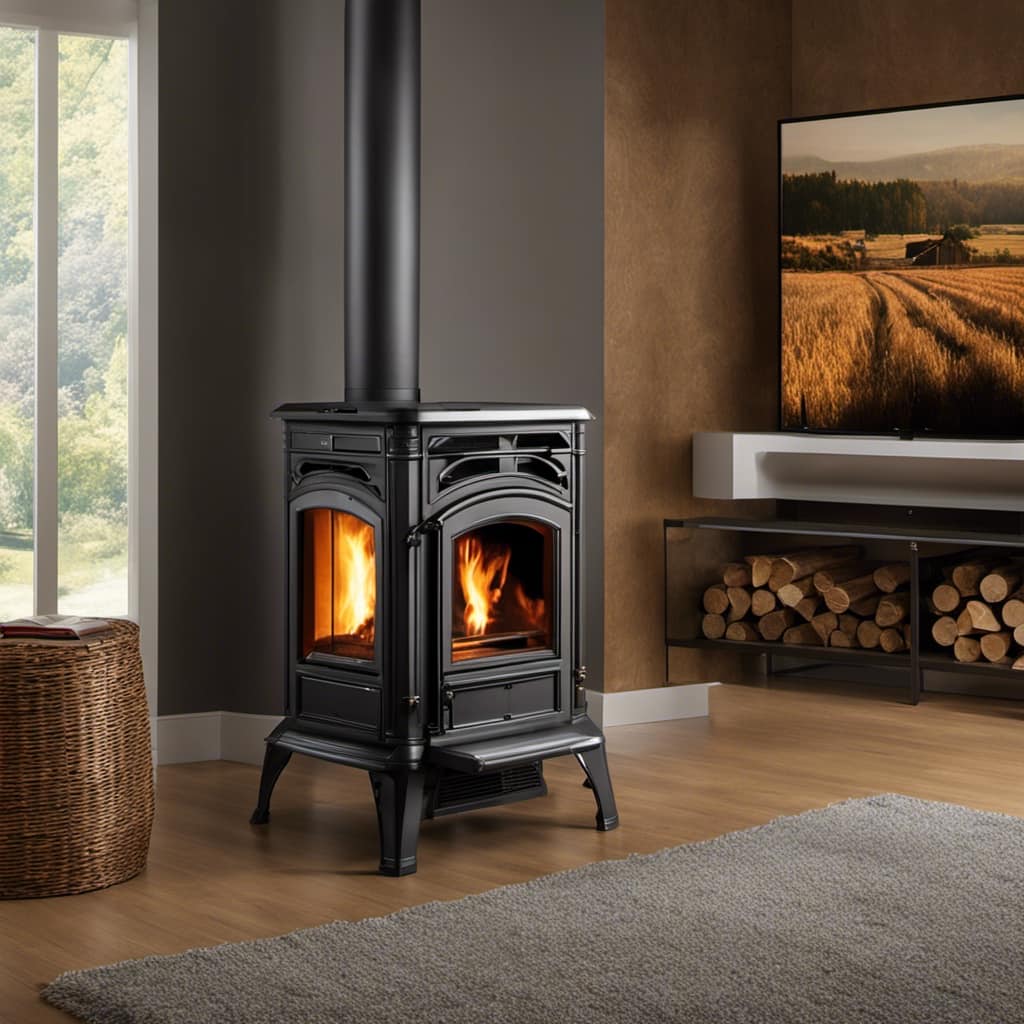
To ensure proper airflow, it’s essential to clean the flue regularly, removing any debris or creosote buildup that may restrict airflow. Additionally, checking the damper position is crucial. Adjusting the damper for maximum heat allows for better control over the combustion process, ensuring efficient burning of the wood and maximizing heat output.
Adjusting the Damper for Maximum Heat
When adjusting the damper for maximum heat, it’s important to find the right balance between airflow and combustion. To maximize efficiency and control heat distribution, here are some key points to consider:
-
Adjust the damper based on the desired heat output. By opening the damper fully, more air will enter the stove, resulting in a hotter fire. However, this may also lead to faster fuel consumption.
-
Monitor the burn rate and adjust the damper accordingly. If the fire is burning too quickly, partially close the damper to slow down the combustion process and extend the burn time.
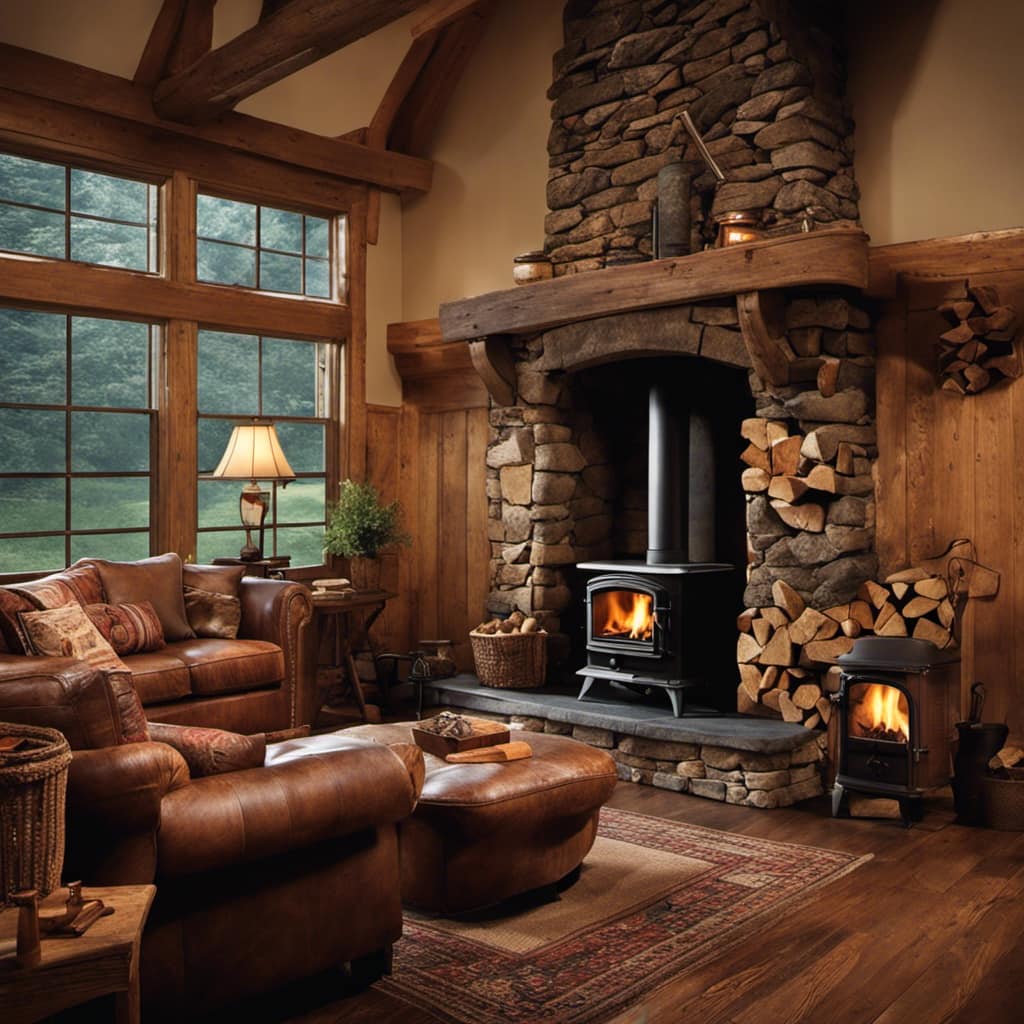
-
Experiment with different damper settings to find the optimal balance. Each stove and fuel type may require slight adjustments to achieve the desired heat output.
Managing Draft Control for Optimal Performance
To achieve optimal performance, I adjust the draft control and monitor the combustion process closely.
Proper draft control is crucial for maximizing the heat output of a wood stove. It ensures efficient combustion by regulating the flow of air into the firebox and the expulsion of smoke through the flue.
Flue maintenance is essential to maintain a clear and unrestricted pathway for the smoke to exit the stove. Regular cleaning and inspection of the flue can prevent blockages and improve draft performance.
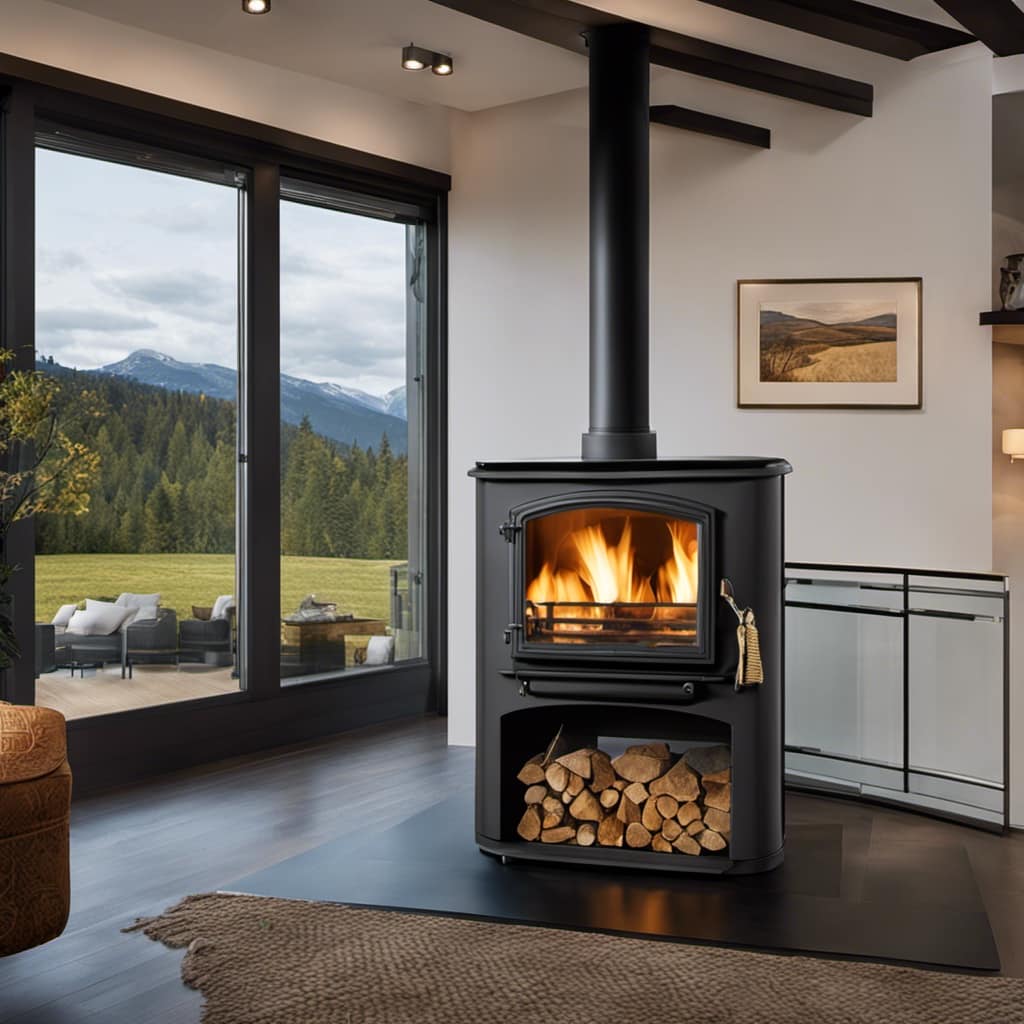
However, if draft issues arise, troubleshooting becomes necessary. Common causes of draft problems include a dirty or obstructed flue, a closed damper, or insufficient air supply. By addressing these issues promptly and adjusting the draft control accordingly, optimal performance can be achieved, resulting in efficient and effective heat production.
Tips for Maintaining Efficient Flue Settings
I find that regular cleaning and inspection of the flue is crucial for maintaining efficient flue settings. As a homeowner, I understand the importance of maximizing heat output from my wood stove. Here are some troubleshooting techniques and maintenance tips I’ve learned:
-
Clean the flue regularly to remove creosote buildup, which can reduce efficiency and increase the risk of chimney fires.
-
Inspect the flue for any obstructions, such as bird nests or debris, that can restrict airflow.

-
Check the damper and ensure it opens and closes properly to control the flow of air.
-
Use a chimney brush to remove soot and debris from the flue walls, ensuring smooth airflow.
-
Monitor the flue temperature regularly to identify any abnormal patterns that may indicate a problem.
-
Consider installing a flue liner to improve efficiency and prevent heat loss.
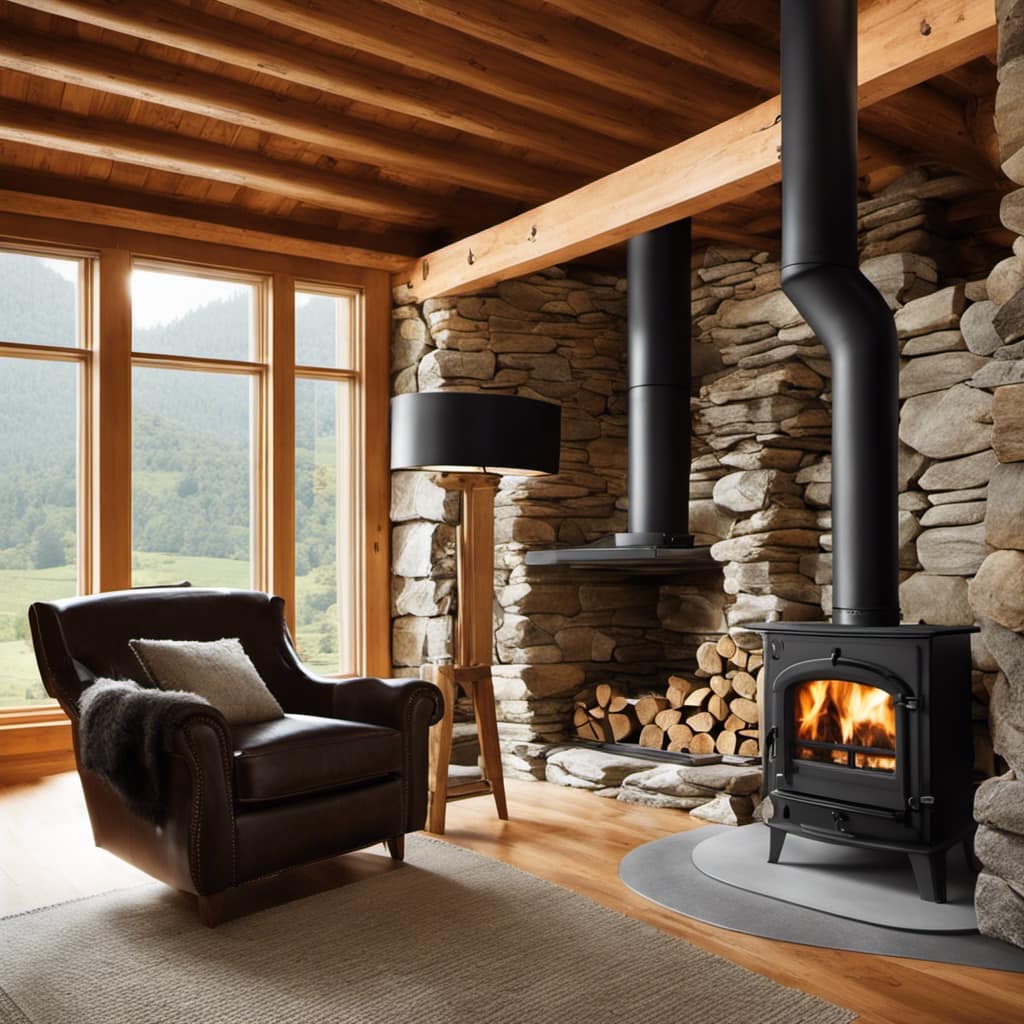
-
Schedule an annual professional inspection to identify any potential issues and ensure optimal flue performance.
Frequently Asked Questions
How Often Should I Clean My Wood Stove Flue?
I clean my wood stove flue every year to ensure it’s free from creosote buildup and other debris. This is the recommended frequency of wood stove flue cleaning to maintain optimal performance and reduce the risk of chimney fires.
Can I Use My Wood Stove Flue Settings to Control the Temperature in My Home?
Can I use my wood stove flue settings to control the temperature in my home? Yes, adjusting the flue settings allows for controlling wood stove temperature and optimizing its performance, ensuring maximum heat output and comfort.
What Are the Signs That My Wood Stove Flue Settings Need Adjustment?
When it comes to wood stove flue settings, signs of flue blockage and the importance of regular maintenance are crucial factors to consider. Regular adjustments are necessary for optimal heat output and safety.
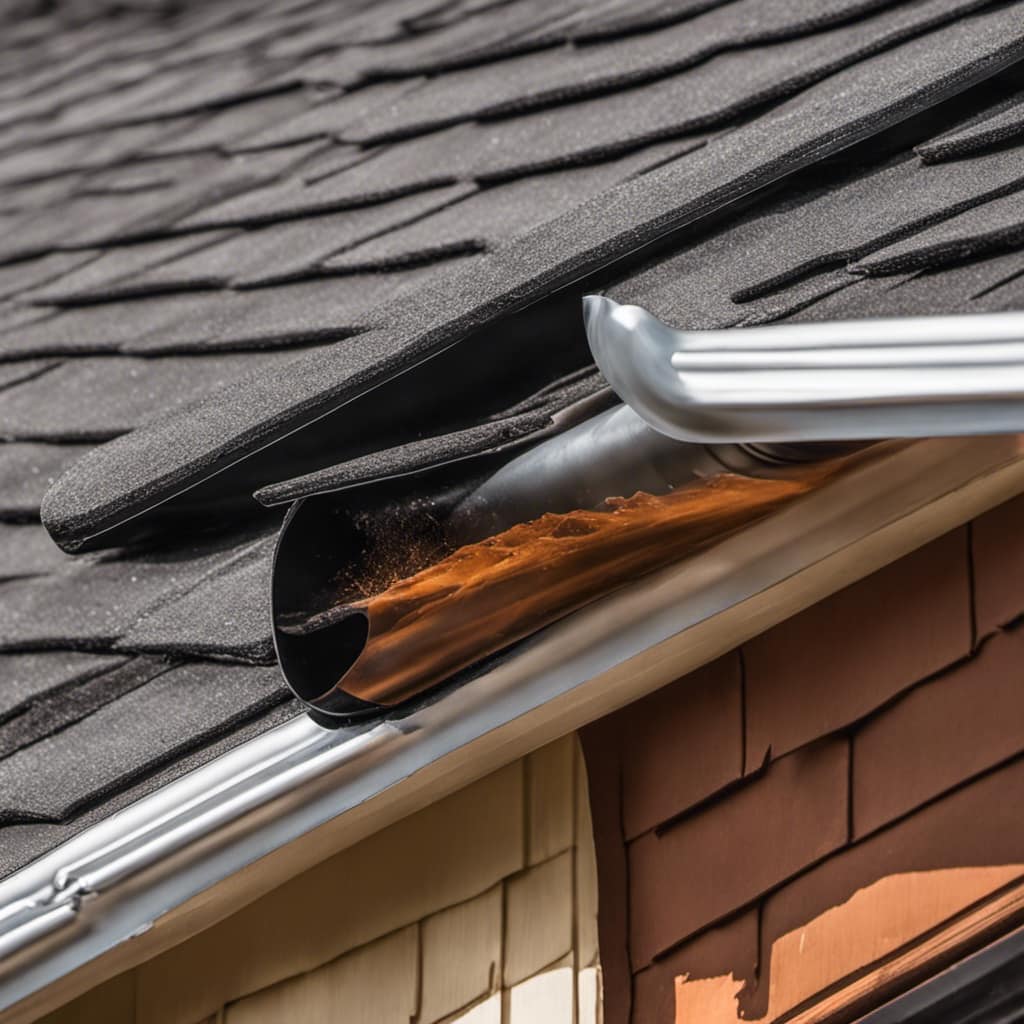
Can I Use My Wood Stove Flue Settings to Reduce Smoke and Emissions?
Yes, adjusting my wood stove flue settings can reduce smoke and emissions, helping to reduce my environmental impact. It can also increase fuel efficiency by ensuring that more heat is directed into the room.
Are There Any Safety Precautions I Should Take When Adjusting My Wood Stove Flue Settings?
When adjusting flue settings safely, it is important to consider potential dangers. Always wear protective gear and ensure the stove is cool before making any adjustments. Follow manufacturer’s instructions and be cautious of carbon monoxide buildup.
Conclusion
In conclusion, by understanding and properly adjusting the flue settings, you can maximize the heat output of your wood stove. It’s crucial to maintain a balance between airflow and draft control for optimal performance.
With these tips, you can ensure efficient and effective heating in your home. So, don’t miss out on the incredible warmth that your wood stove can provide, unleash the blazing power and turn your space into a cozy inferno!
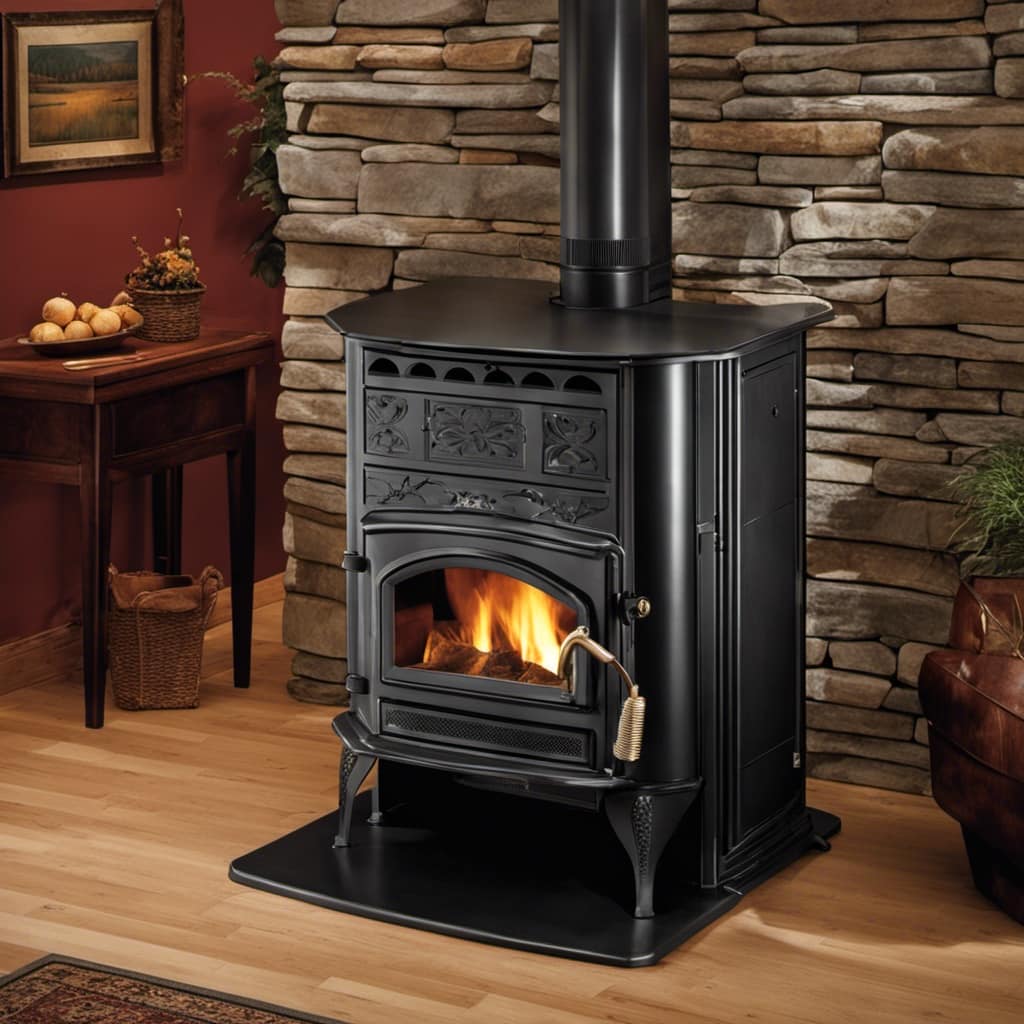
Growing up surrounded by the vast beauty of nature, Sierra was always drawn to the call of the wild. While others sought the comfort of the familiar, she ventured out, embracing the unpredictable and finding stories in the heartbeat of nature.
At the epicenter of every remarkable venture lies a dynamic team—a fusion of diverse talents, visions, and passions. The essence of Best Small Wood Stoves is crafted and refined by such a trio: Sierra, Logan, and Terra. Their collective expertise has transformed the platform into a leading authority on small wood stoves, radiating warmth and knowledge in equal measure.





